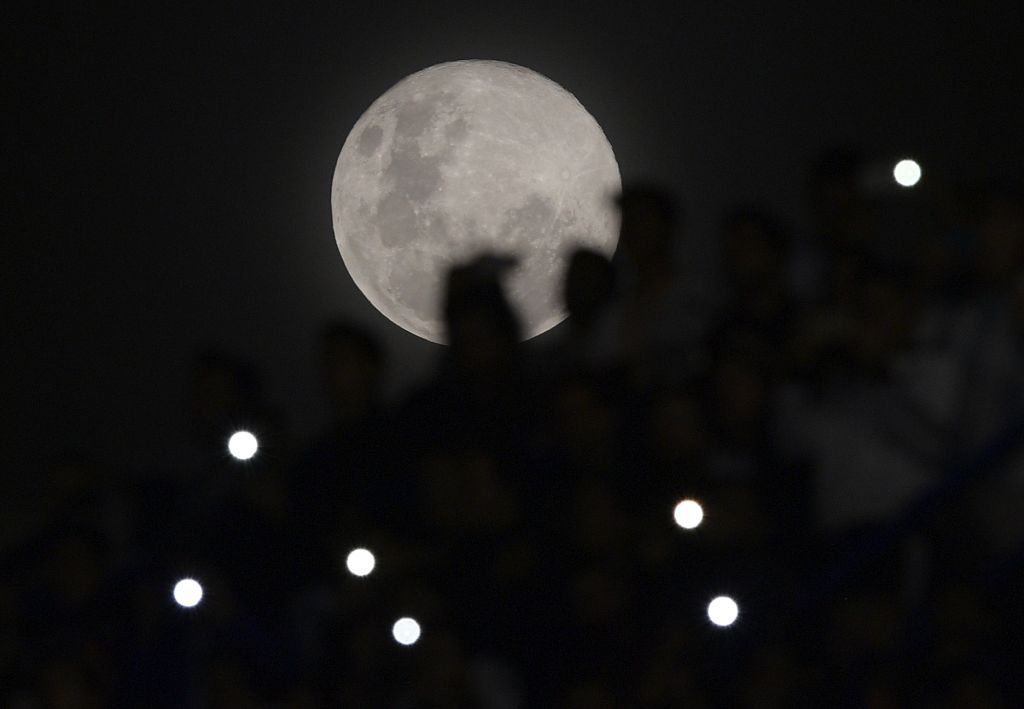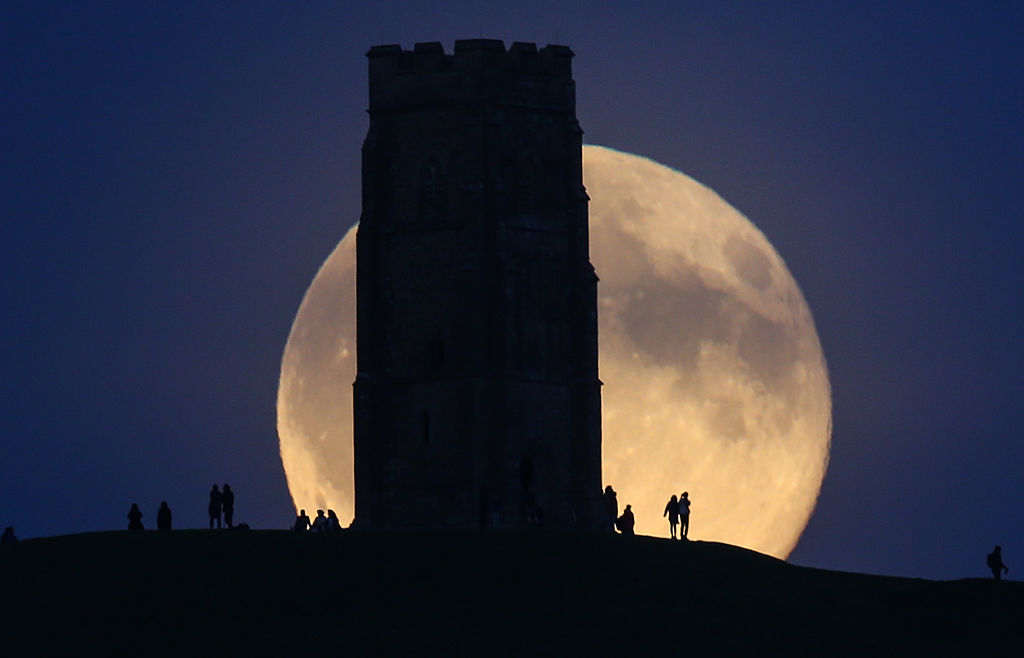The first supermoon of the year 2020 is right around the corner and will be visible in North and South America during the daylight hours of Monday, March 9.
The March supermoon—also called the “Full Worm Moon”—will be the first out of three supermoons to appear in 2020, and will reach peak fullness Monday at 1:48 p.m. EDT, but will appear full from Sunday, March 8, right through to the evening of Tuesday, March 10.
There are other alternative nicknames for the March supermoon, but “Worm Moon” is being the most widely used.
One such alternative name was the “Full Sap Moon,” as March is the time of year when the sap of sugar maples starts to flow, according to the The Old Farmer’s Almanac.
The nicknames bestowed upon the full moons were originally designated by Native American tribes in the Northeast in order to help keep track of the seasons.
Supermoons are full moons that coincide with the Moon’s closest distance to Earth within its 27-day orbit, according to Space.com.
At that time, the moon can appear up to 14 percent larger and as much as 30 percent brighter than a regular full moon, although the difference is sometimes imperceptible to the naked eye.
Experts said that 2020 will have two supermoons occurring just a month apart, in March and April respectively. The second is billed to be the “bigger” of the two.
The Full Moons of 2020
March 9: Worm moon (supermoon)
April 7: Pink moon (supermoon)
May 7: Flower moon
June 5: Strawberry moon
July 5: Buck moon
August 3: Sturgeon moon
September 2: Corn moon
October 1: Harvest moon
October 31: Blue moon
November 30: Beaver moon
December 29: Cold moon

According to the Farmer’s Almanac, the wolf moon referred to the howling of the wolves in midwinter and the snow moon to the heaviest snowfall of the year. The worm moon referred to the first reappearance of the earthworm as the ground began to thaw; the pink moon and flower moon each referenced the emergence of spring flowers.
The strawberry moon denoted the strawberry harvest of the same month; the buck and sturgeon moons marked the appearance of these animals in the wild, and therefore the perfect time to hunt and harvest them.
The corn and harvest moons were named to coincide with the peak of the harvest season, during which time farmers could work late into the night under the light of the Moon. Last but not least, the beaver moon and cold moo referred to the onset of deep winter and the perfect time to hunt beavers for their warm fur.
The best setting in which to view a full moon is under dark skies and away from city lights. Optimal viewing times for 2020’s full moons will naturally depend upon geographic location.

Epoch Times reporter Louise Bevan contributed to this report.
